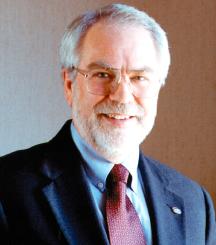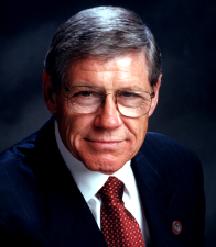[The Montana Professor 17.2, Spring 2007 <http://mtprof.msun.edu>]

Geoffrey G. Gamble
President
Montana State University

George M. Dennison
President
The University of Montana
This issue of The Montana Professor continues the dialogue initiated in the Fall concerning the role and responsibilities of public higher education. The piece on financing public higher education in Montana seeks to establish a context for understanding the current situation, how it developed, and the prospects for changing it. Quite clearly, public higher education followed a similar financing trajectory across the country for similar reasons, although it started later but proceeded faster and farther in Montana than in most other states. As new demands on the public dollar emerged, the claim from public higher education lost ground. Policy makers tended to appropriate funds for those services and entities lacking any other revenue source. Higher education had increasingly to rely on tuition, but governing boards sought to restrain the tuition increases in order to maintain access. The tension between access and quality over time induced a demand for accountability focused upon access--almost, it seemed--with insufficient concern for quality. The denouement currently hangs in the balance, awaiting decisions by the Montana Legislature concerning the Governor's College Affordability Plan. As the article seeks to explain, Montana, like the nation, has reached a crossroads with regard to public higher education and its financing. Public institutions of higher education can achieve fiscal soundness, while maintaining both adequate access and high quality, only if the policy makers re-affirm the long-standing belief that each generation has the responsibility of educating the next.
The remaining articles offer variations on our main theme. While not arranged as an exchange, the two pieces by Myles Brand and Frank Splitt offer contrasting views about the role and control of intercollegiate athletics. Brand argues for faculty engagement to assure that intercollegiate athletics remains an integral part of the academy, while Splitt urges federal intervention by Congress to bring under control what he sees as excessive dedication of higher education resources to intercollegiate athletics. Similarly, again while not arranged as an exchange, the two pieces by Paul Trout and Stanley Fish highlight vividly the policy differences concerning the merits of political intervention in the academy for any reason. Nancy Mattina explores the changing dynamics of and the apparent pervasiveness of plagiarism within the academy and society at large. She calls for a careful differentiation between the incidents of plagiarism by professionals, leading to public scandals and apologies, and the "new plagiarism" among students, resulting in part from inadequate education and in part from the ease of access to information made available by the internet. To control the former requires greater ethical integrity within the professions. Students need guidance and appropriate structuring of instructional activities to learn how to avoid plagiarism and its self-defeating effects. Finally, Thomas Bertonneau invokes the original purpose of the academy as a reminder of the ethical responsibility of the academic professional to reason and the life of the mind. He argues that accountability begins with self-awareness and respect for the "old wisdom."
The pieces in this issue suggest the implications of some new developments within the larger societal dialogue about the role and responsibility of public higher education across the country. Recent discussions bring together concerns about access and quality under the rubric of accountability. In a very real sense, the at times vituperative debate about "intellectual diversity" within the academy fits within this framework. While we may differ about the prudence of seeking more politics as the means to redress too much politics in the classroom, the issue in contention surely relates to accountability. How intercollegiate athletics serves the mission of public higher education also raises the question of accountability, particularly within the context of the so-called "facilities arms race" and the escalating salaries for high profile coaches. Finally, can any institution sustain its mission and purpose if its professional cadre neglect or ignore the ethical implications of their approach to stewardship?
Similarly, the discussion of financing arrangements raises questions about efficacy and equity. It seems clear that in the absence of change, public higher education cannot continue to serve both access and quality as it has for some two centuries. However, it bears noting that rethinking the challenge requires an effort to get beyond the easy assumptions of the past and to launch a public debate about means and ends. A willingness to consider new options seems essential to sustain the historic legacy. In that regard, a simplistic insistence upon low tuition holds little prospect of success because of the recognized erosion of quality when state appropriations for whatever reasons fall short of required levels. However, the aggregation of all available federal funding for student financial aid into one consistent delivery system providing tax rebates or actual payments to those who fall below an established income threshold, combined with an insistence upon academic preparedness or the willingness to become prepared, has potential as a means to address the dominant equity and ethical issue of our time--the correlation between family income and access to college.
More, not less, public dialogue appears needed to bring these discussions about access, quality, and accountability to a responsive conclusion. We trust the readers will agree that these two issues of The Montana Professor have raised important questions requiring resolution. We also hope that the public dialogue has just begun and will continue until some resolution of the issues assures that public higher education continues its historic role of service to the society.
[The Montana Professor 17.2, Spring 2007 <http://mtprof.msun.edu>]